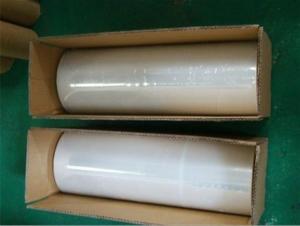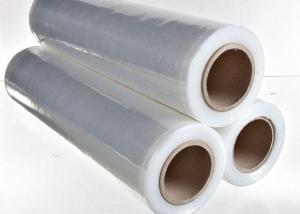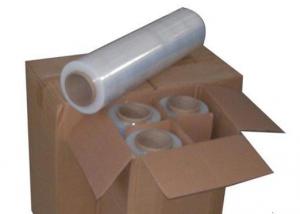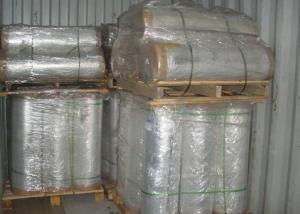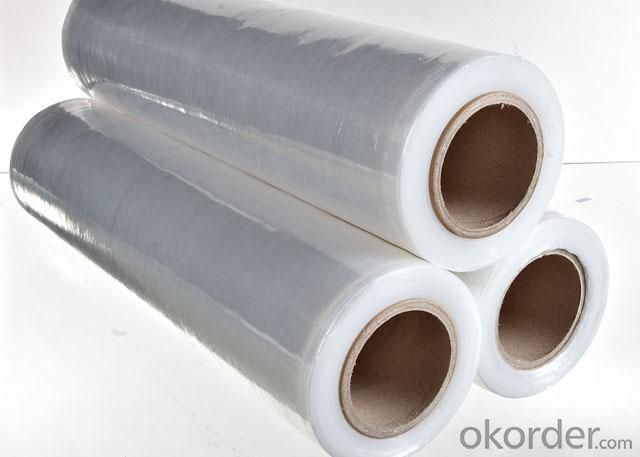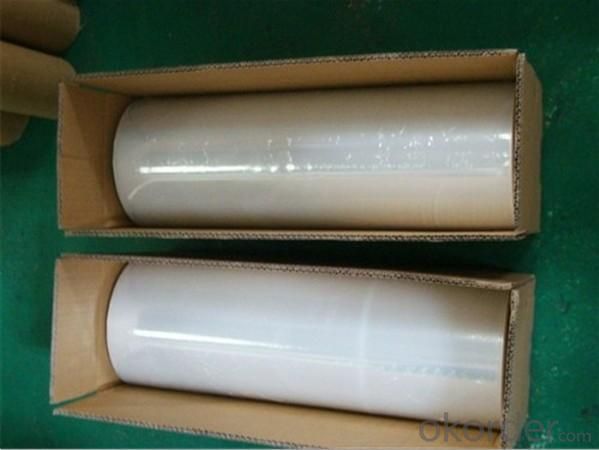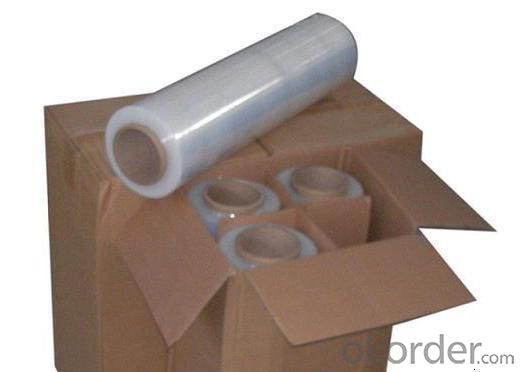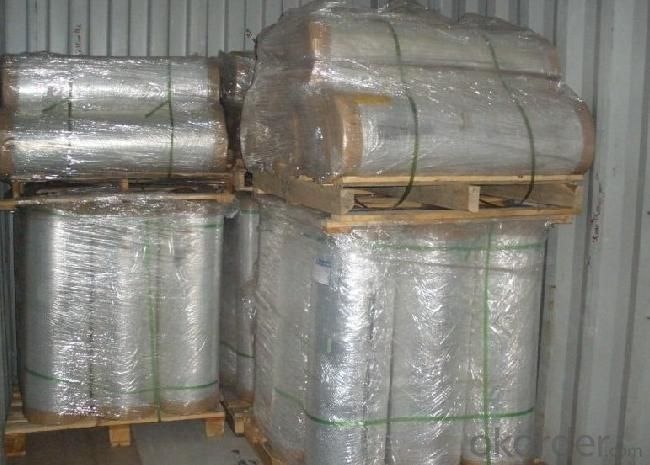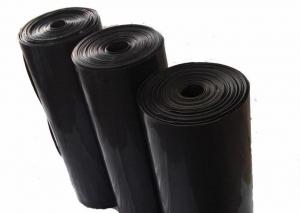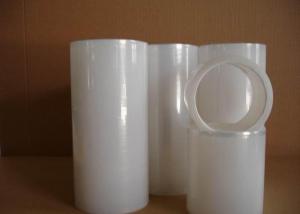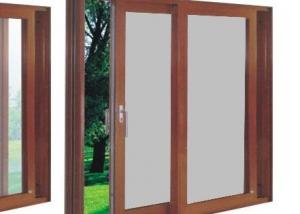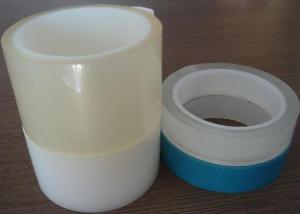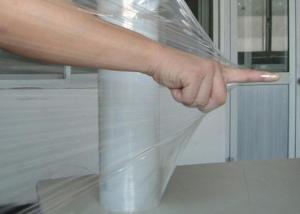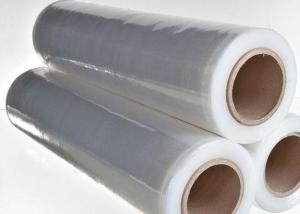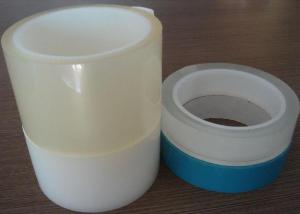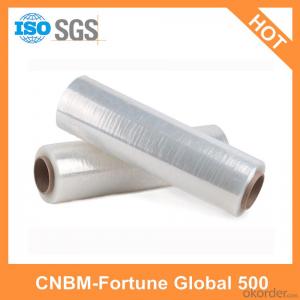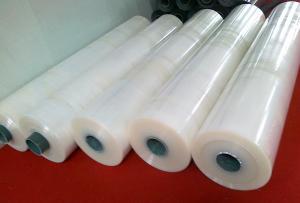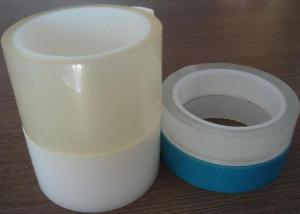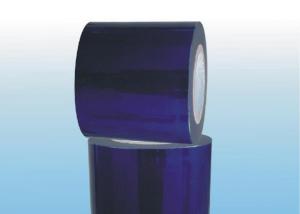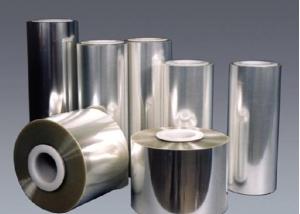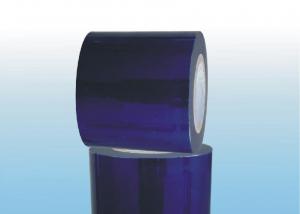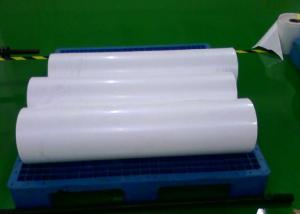Transfer Film
- Loading Port:
- China Main Port
- Payment Terms:
- TT or LC
- Min Order Qty:
- 1Ton m.t.
- Supply Capability:
- 10Tons Per Day m.t./month
OKorder Service Pledge
OKorder Financial Service
You Might Also Like
1.Specifications of Transfer Film:
Excellent optical property, high adhesion between film and alumium layer after chemical treatment on the surface of film.
Good gloss ,lowest haze, Due to high adhesion of aluminium layer,No Al layer peels the shelf of life can be retained.
Low heat shrinkage, well tensile strength, aluminium coating is well-proportioned has very high luster degree, light reflectivity reach 98%.a higher barrier can be achieved by increasing the thickness of Al layer.
Strong water resistance, high temperature resistance.
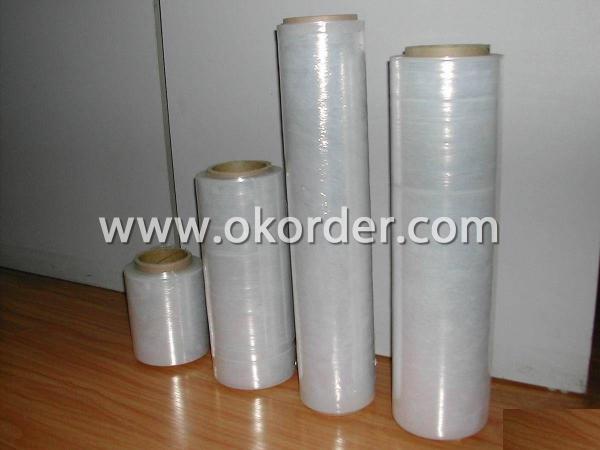
2. Usage of Transfer Film:
Transfer Film is available in hand-applied and machine formats for product moisture proof, anti-dust, fastening and protecting etc. Our stretch film are widely used in following fields, such as outer packing of corrugated box or pallet, packing of loose and small products together, packing of bare machine etc.
3. Packaging & Delivery of Transfer Film:
One 20GP container can be loaded about 10-15tons.
By sea or by air all available.
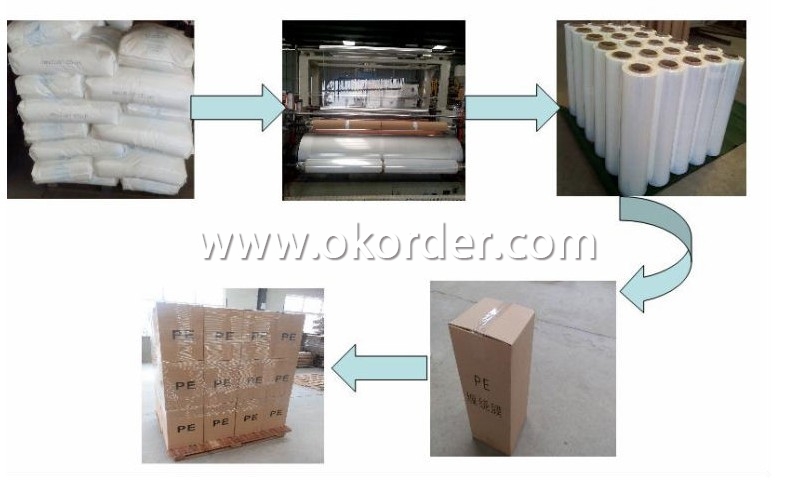
- Q: The ways to remove the protective film on household appliances
- Using the dedicated detergent for washing air conditioning (for example "Dichen" that is used when there's too much greasy dirt in the air conditioning that the refrigeration is affected. The effect is pretty good.) Such dedicated detergent is sold in refrigeration parts store.
- Q: Bad smell generated from the electric baking pan after its protective film is destroyed. Is the pan still usable?
- The smell is toxic. The non-stick interior coating is destroyed. I was told that things like is unusable soon or later. You'd better replace it as early as possible. It's destroyed by the spatulas.
- Q: How to skillfully clean the residual wax on the edges of the floor tiles after the protective films are torn off?
- Sprinkling some calcium magnesium powder on the floor can make it easy to clean the wax. And you can go to the ceramic tile shop to buy a kind of tile cleaning agent. The simplest way is to scrub the dry floor with a dry cloth or towel.
- Q: Shampoo a lot of times, sometimes without hot water wash with cold waterThat often wash your hair, it is easy to remove the protective film, then how can you fix it?
- Monday: avoid hair products that hurt hairYou might use some hair spray and styling spray to manage some of your loose hair. However, these chemicals, such as alcohol, will keep your hair from becoming more oily for longer periods of time than touching your hair with the air. If you want to use, should be used in hair from the hair root.
- Q: What are the materials used in the production of aluminium protective films? What's the harm to life?
- Aluminum production is mainly used PE protective film, common protective films are: milk white PE protective film, blue PE protective film, high permeability PE protective film.PE protective films are environmentally friendly products, fully in line with the relevant national standards - strictly speaking, international standards. No harm to the human body. Our factory produces a large number of such protective film, there is a need to find us.
- Q: The color of the aluminium-plastic panel is white without protective film. But I've seen other colors that looks like it's painted.
- This shows that the quality of the coating of the aluminium-plastic panel you bought is not good. The paint on the surface of the panel should be very even and consistent. There shouldn't be any dark stripe or marks or shades of the same color which usually appear in spraying processing.
- Q: What to do when the keyboard protective film is not adsorptive any more ?
- Buy a new one with grooves which will help fixation. Some nice producers will give bouble-sided tape as a gift with the film.
- Q: What kind of printing press is needed to cover decorative protective film?
- During the processing of protective film, film mulching machine must be used in film mulching. And gravure rotary press can be used in printing the protective film.
- Q: What properties does the glue on the glass protective film have? Why doesn't its adhesion change when it meets water?
- Usually the glue on the glass protective film is acrylic adhesive. Its adhesion will be badly affected when it's exposed to water for a long time.
- Q: What to do if the sandblasted protective film on marble stele is not adhesive any more?
- The reasons may be: 1. If there is oil or water on the surface of the processed stele, the film can't be sticked firmly. 2. Maybe the adhesion of the protective film is not enough. I suggest you try a new film that is more adhesive. We have recieved many similar complaints from our customers. Generally, we will provide them with a variety of protective films for testing.
1. Manufacturer Overview
| Location | Jiangsu,China |
| Year Established | 1998 |
| Annual Output Value | Above US$ 75 Million |
| Main Markets | Northern Europe, North America, Eastern Asia, Eastern Europe, Southeast Asia, Western Europe, Southern Europe |
| Company Certifications | National Industrial Products Production License |
2. Manufacturer Certificates
| a) Certification Name | |
| Range | |
| Reference | |
| Validity Period |
3. Manufacturer Capability
| a) Trade Capacity | |
| Nearest Port | Jiangsu |
| Export Percentage | 5% -10% |
| No.of Employees in Trade Department | 21-50 People |
| Language Spoken: | English; Chinese |
| b) Factory Information | |
| Factory Size: | Above 66000 square meters |
| No. of Production Lines | Above 8 |
| Contract Manufacturing | OEM Service Offered; Design Service Offered |
| Product Price Range | Average |
Send your message to us
Transfer Film
- Loading Port:
- China Main Port
- Payment Terms:
- TT or LC
- Min Order Qty:
- 1Ton m.t.
- Supply Capability:
- 10Tons Per Day m.t./month
OKorder Service Pledge
OKorder Financial Service
Similar products
Hot products
Hot Searches
Related keywords
